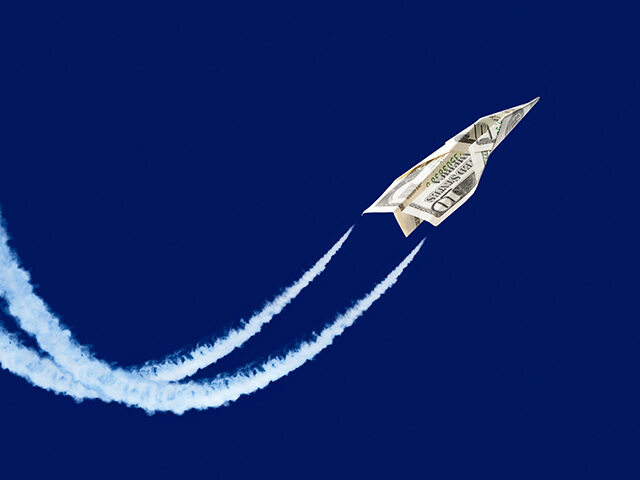The economy grew at a much faster pace than expected in the final months of 2023, the Bureau of Economic Analysis said Thursday, boosted by robust consumer spending and ballooning government budgets.
Gross domestic product, the government’s broadest scorecard for the economy, rose at an inflation-adjusted 3.3 percent annual pace in the fourth quarter.
Economists had been expecting the economy to grow at a two percent pace in the October through December period. Even the most bullish forecasts saw just 2.5 percent growth in the fourth quarter.
After adjusting for inflation, the economy grew at a 4.9 percent pace in the prior quarter.
Measured from the fourth quarter of 2022 to the fourth quarter of 2023, real GDP rose 3.1 percent.
The rapid pace of growth in the fourth quarter could upend expectations for Fed cuts early this year. Fed officials have said that they think the economy will need to grow “below trend”—around 1.8 percent—for a period of time for inflation to sustainably fall to the central bank’s two percent target.
Economists have been debating whether the economy could achieve a “soft landing” this year, defined as a sustained fall in inflation to two percent while the economy continues to grow at a solid pace. Some say the economy is headed for a “hard landing,” in which growth slumps or the economy falls into a recession as inflation falls. A third view sees “no landing,” where the economy continues to grow above trend and inflation does not fall sustainably to the Fed’s target.
The strong pace of growth in the second half of 2023 suggests that the soft landing and no landing scenarios are more likely to be right than the hard landing forecasts.
Before the inflation adjustment, the economy grew at a 4.8 percent pace in the fourth quarter. That’s a slowdown from the 8.3 percent pace of nominal growth in the third quarter.
For the full year, the U.S. economy expanded 2.5 percent in 2023, up from 1.9 percent in the prior year. Before adjusting for inflation, the economy grew 6.3 percent last year and 9.3 percent in the prior year.
Growth in the fourth quarter was boosted by increases in consumer spending, exports, government spending, business investment, and housing investment. Consumers spent more on both goods and services. Overall, consumer spending rose at an annual rate of 2.8 percent, above the expectation for 2.5 percent growth and not far behind the sizzling 3.1 percent growth of the third quarter.
When it comes to services, spending on dining out and increased spending on housing led the increase. For goods, the increased spending was led by spending on pharmaceutical drugs, recreational goods, and vehicles.
Petroleum and financial services led the rise in exports.
Government spending rose 4.3 percent last year after adjusting for inflation. Compared with the prior quarter, government expenditures were up 3.3 percent in the fourth quarter, a slowdown from the quarterly rate of growth of 5.8 percent in the third quarter.
Federal government spending rose four percent in 2023, including a 4.7 percent rise in nondefense spending and a 3.3 percent rise in defense spending. State and local government spending climbed 4.5 percent.

COMMENTS
Please let us know if you're having issues with commenting.